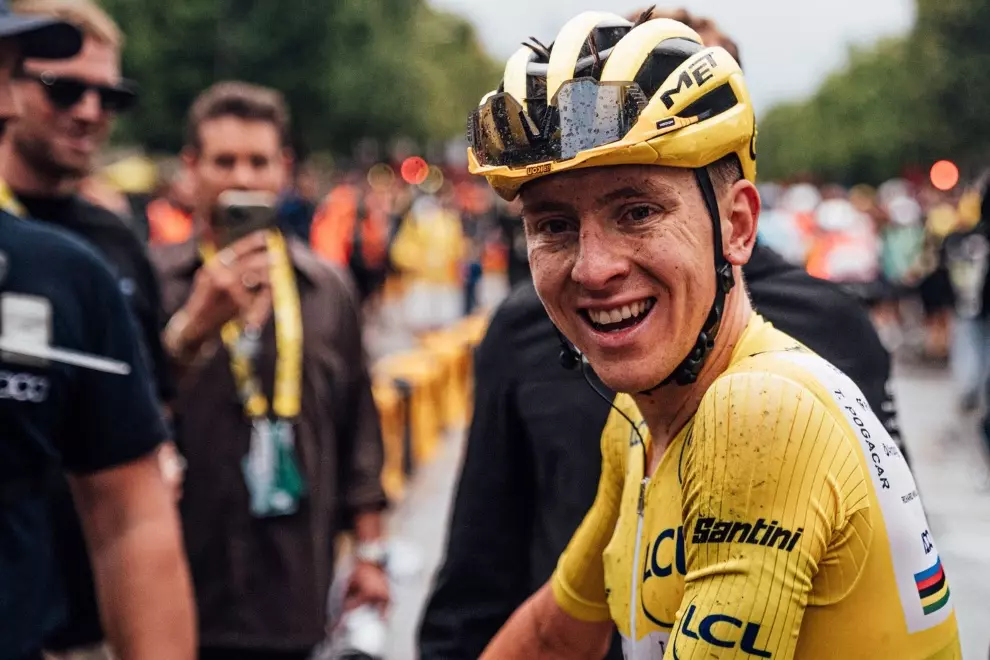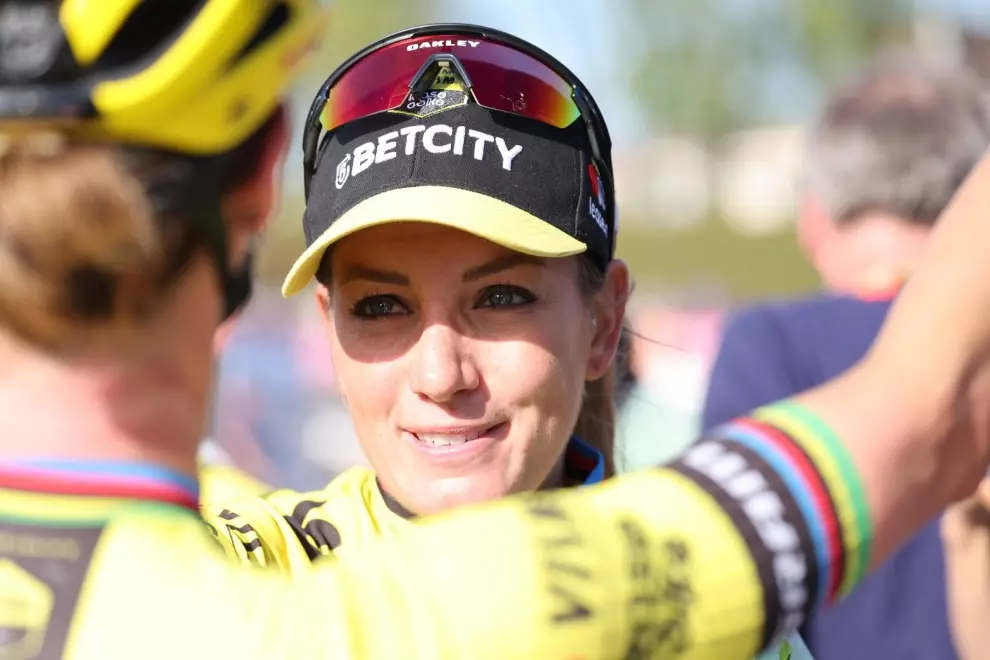The transformation took place near Mladá Boleslav, the Czech Republic, where the ENYAQ iV was manufactured, in complete secrecy. Martin Smutný of Best Modell, the company in charge of the modifications, let out some details in an exclusive interview for Škoda Storyboard. The most striking outside changes include coating the car in the signature ‘Velvet Red’ shade, a few raised advertising banners, Tour de France decals and, most notably, a set of six long antennas that had to be drilled through the roof and sides. These are vital for the leading car’s role as a ‘mobile command centre’ of the Tour as they enable it to unfold fairly and as smoothly as possible.
The aerials connect to a two-way radio and a communication console found between the car’s front seats. Mr Prudhomme, the Tour’s director, uses it to organize the race’s traffic and to maintain contact with the race marshals in two accompanying ENYAQ iVs and other tour vehicles, such as the team and neutral support cars, and exchange information with them regarding the status of the race. The starting positions of both the riders and their team cars depend on the running ranking and points. The lower the ranking, the further the team cars are from their cyclists. Only Mr Prudhomme can allow the cars to break assigned ranks and speed up towards a rider who has mechanical issues, has been injured or sometimes both. All cycling fans know well that mere seconds decide the winner so the Tour’s director has to act and give orders as swiftly as needed, which is possible thanks to the leading car’s built-in radio.

According to the constructers, the hardest feat was to put in place the huge custom-built retractable sunroof that had to fit on the first try. As the director needs to start each stage by waving of the ‘Départ’ flag, he has to be able to sit up comfortably from his back seat and stand up through the sunroof. First, the whole car had to be dismantled, then a sizeable hole had to be cut through the roof including the existing reinforcements, and only then the sunroof could be fitted, welded, sealed and connected to a power supply.
To offer a further hint of comfort, luxury and a chance for the ever-occupied Mr Prudhomme to unwind, the car also has a new mini-fridge installed that fits two bottles of Champagne. The Tour’s director uses it to welcome VIP guests in his command centre of a car. The filled Champagne flutes can then be rested in unique holders, 3D printed specifically for this particular red ENYAQ iV.
As previously mentioned, ENYAQ iV is not only the historically first all-electric vehicle to lead the Tour de France peloton but it’s also Škoda’s first model using the modular electrification toolkit (MEB) as a powertrain. It’s worth noting that Škoda’s history is bound with cycling since the very beginning and continues to be due to sponsorship of a number of major cycling races but the first-ever all-electric Tour leading car also created a new common ground with the bicycle – sustainability. Sustainable individual mobility, to be precise. This way, the Tour de France provides the perfect stage to introduce the ENYAQ iV to an international audience. The new flagship will head the peloton two more times – the individual time trial from Lure to La Planche des Belles and the final 122-kilometre stage from Mantes-la-Jolie to Paris where it will cross the grand finish line on Avenue des Champs-Élysées alongside the riders.




